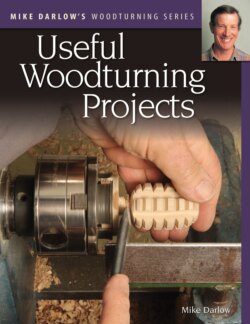Читать книгу Mike Darlow's Woodturning Series: Useful Woodturning Projects - Mike Darlow - Страница 25
1.4 GENERAL MATTERS
ОглавлениеThis book assumes that you’re familiar with the basic woodturning techniques. It therefore repeats little content from my earlier woodturning books, but does explain techniques which are out of the ordinary and particular to a project. I have provided dimensioned scale drawings of the projects, usually in the form of pencil gauges. I don’t claim copyright on any of my designs for this book. You’re therefore free to copy, modify, or scale them. If you do, it wouldn’t belittle you to mention the source.
Many readers will, like me, have drills with imperial and metric diameters. However for woodturners millimeters are a far more convenient unit of measurement than inches. Therefore unless it’s appropriate to use a drill with an imperial diameter, I’ll usually dimension drill and hole diameters in millimeters, and you can instead choose to use a drill with a close imperial diameter. Note that a greater range of drill diameters are available from specialist engineering suppliers than from most hardware shops. I’ve also assumed that axial holes in turnings will be bored in the lathe.
The range of possible chucks and chucking procedures can be large even for simple turnings, and will be influenced by the equipment the turner can readily access. I have not attempted to explain all the chucking and sequence choices for a particular situation.
I use the terms polish and polishing for operations such as sealing, painting, varnishing, lacquering, oiling and/or waxing together with any associated sanding which are applied to the wood to enhance appearance and/or provide protection. When producing a turning, I often call the last turning operation on a workpiece finish-turning, a term introduced by Peter Child.9 This term includes any appropriate sanding. Thus finish-turning precedes, but does not include any polishing.
I’ve usually taken the on-lathe photographs using an Elinchrom 250R flash head which has an exceptionally short flash duration. The resulting photographs may therefore appear posed with the lathe turned off when in fact it’s running.
